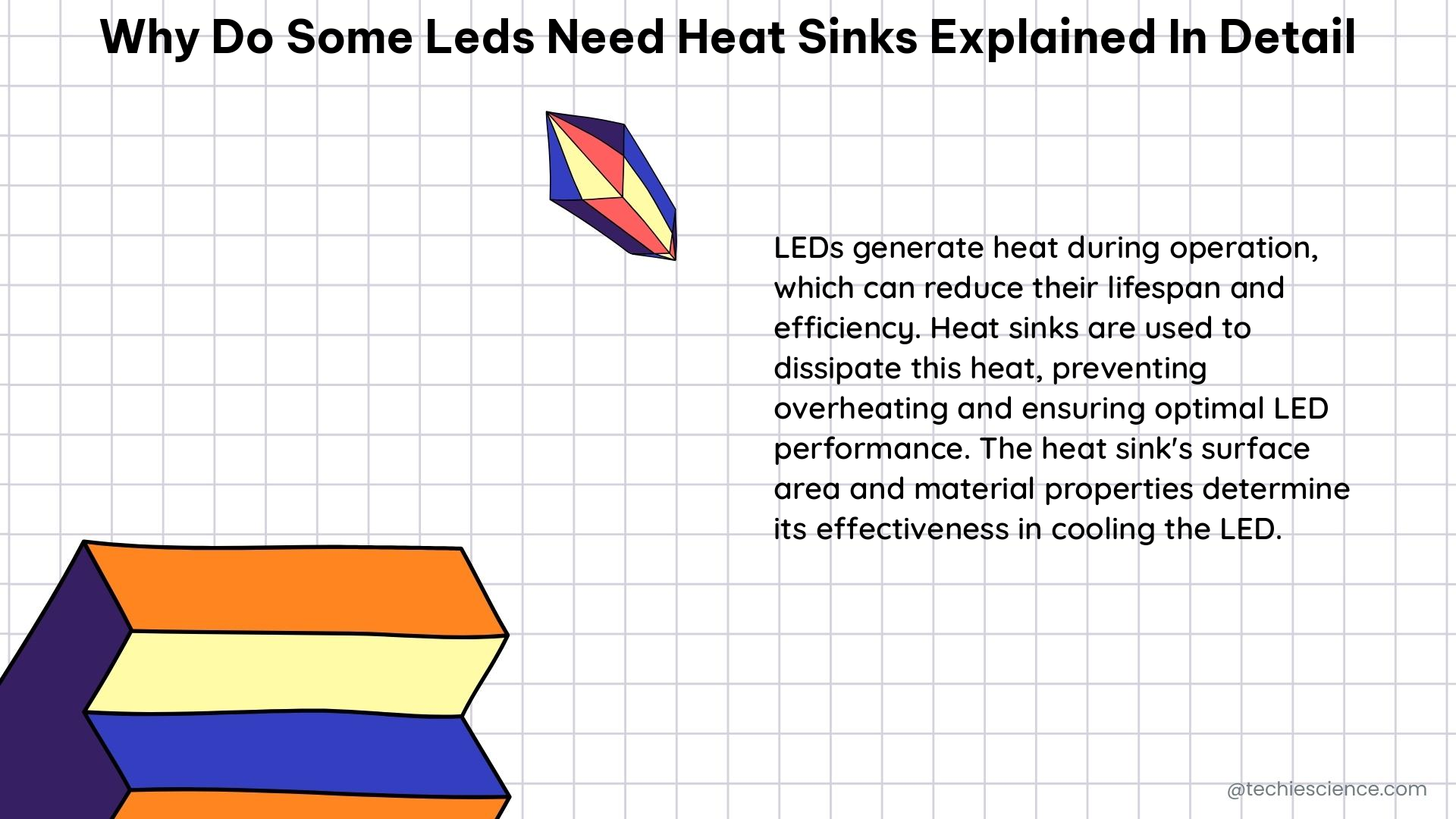LED (Light-Emitting Diode) technology has revolutionized the lighting industry, offering energy-efficient, long-lasting, and versatile lighting solutions. However, the internal workings of LEDs generate a significant amount of heat, which can negatively impact their performance and lifespan if not properly managed. This is where heat sinks play a crucial role in ensuring the optimal operation of high-power LEDs.
Understanding LED Heat Generation
LEDs are semiconductor devices that convert electrical energy into light. While they are generally cool to the touch, the internal processes involved in light production generate a substantial amount of heat. This heat is a byproduct of the inefficiency of the semiconductor materials used in LEDs, which convert only a portion of the input electrical energy into light, with the rest being converted into thermal energy.
The heat generated within an LED is primarily concentrated at the junction, which is the area where the p-type and n-type semiconductor materials meet. This junction temperature is a critical factor in the performance and lifespan of an LED. As the junction temperature increases, the LED’s characteristics can change, leading to a decrease in both forward voltage and lumen output, ultimately affecting the overall lifetime of the LED.
The Role of Heat Sinks in LED Thermal Management

Heat sinks are essential for efficient thermal management in high-power LED applications. They are designed to absorb the heat generated by the LED and dissipate it into the surrounding environment, ensuring that the junction temperature remains within the optimal range for the LED’s operation.
Factors Affecting Heat Sink Efficiency
The efficiency of a heat sink in cooling an LED is influenced by several factors:
-
Material Composition: The material used in the construction of the heat sink plays a crucial role in its thermal conductivity and heat dissipation capabilities. Aluminum is a commonly used material for LED heat sinks due to its high thermal conductivity, lightweight, and cost-effectiveness.
-
Surface Area: The larger the surface area of the heat sink, the more efficient it will be in dissipating heat. Heat sinks with intricate fin designs or larger surface areas can effectively transfer heat to the surrounding air.
-
Airflow: The movement of air across the heat sink’s surface, either through natural convection or forced airflow, can significantly enhance the heat dissipation process. Proper airflow ensures that the heat is efficiently carried away from the LED.
-
Heat Sink Size and Weight: The size and weight of the heat sink are directly related to its cooling efficiency. Larger and heavier heat sinks generally have better heat dissipation capabilities, as they can absorb and dissipate more heat.
High-Quality LED Grow Lights vs. Cheaper Alternatives
The importance of effective heat management is particularly evident in the case of LED grow lights, which are designed to provide high-intensity lighting for indoor plant cultivation.
High-quality LED grow lights often utilize heavy aluminum heat sinks that make up a significant portion of the fixture’s weight. These robust heat sinks are essential for maintaining the optimal operating temperature of the LEDs, ensuring their long-term performance and reliability.
In contrast, cheaper LED grow light fixtures, particularly those from China, may use less aluminum or inferior heat sink designs. This can result in higher operating temperatures for the LEDs, leading to a shorter lifespan and decreased light output over time. The reduced heat dissipation capabilities of these cheaper fixtures can have a substantial impact on the overall performance and yield of indoor grow operations.
The Impact of High Junction Temperatures on LED Performance
When LED junction temperatures consistently remain too high, the performance and lifespan of the LEDs can be significantly affected. Some of the key impacts include:
-
Decreased Photon Emission: High junction temperatures can cause LEDs to emit fewer photons, resulting in a decrease in the overall light output.
-
Wavelength Shift: Elevated junction temperatures can lead to a shift in the output wavelength of the LED, causing the light to no longer deliver the advertised spectrum. This can have subtle but substantial effects on plant growth and yields in indoor grow operations.
-
Reduced Lifespan: Prolonged exposure to high junction temperatures can accelerate the degradation of the LED’s internal components, leading to a shorter overall lifespan.
These factors highlight the critical importance of effective heat management in LED-based lighting systems, particularly in applications where consistent performance and long-term reliability are essential, such as indoor grow operations.
Conclusion
In summary, heat sinks are a crucial component in the thermal management of high-power LEDs. By absorbing and dissipating the heat generated within the LED, heat sinks ensure that the junction temperature remains within the optimal range, preserving the LED’s performance and extending its lifespan. The efficiency of heat sinks is influenced by factors such as material composition, surface area, airflow, and overall size and weight.
High-quality LED grow lights often utilize heavy aluminum heat sinks to maintain the optimal operating temperature of the LEDs, while cheaper alternatives may use less effective heat sink designs, leading to higher operating temperatures and reduced performance over time. Proper heat management is essential for ensuring the consistent and reliable operation of LED-based lighting systems, particularly in critical applications like indoor plant cultivation.
References:
– LED Heat Sink: What Is It and Why Is It Important?
– Why You Need an LED Heat Sink
– LED Heat Sinks: What Are They and How Do They Affect Grow Light Performance?

The lambdageeks.com Core SME Team is a group of experienced subject matter experts from diverse scientific and technical fields including Physics, Chemistry, Technology,Electronics & Electrical Engineering, Automotive, Mechanical Engineering. Our team collaborates to create high-quality, well-researched articles on a wide range of science and technology topics for the lambdageeks.com website.
All Our Senior SME are having more than 7 Years of experience in the respective fields . They are either Working Industry Professionals or assocaited With different Universities. Refer Our Authors Page to get to know About our Core SMEs.